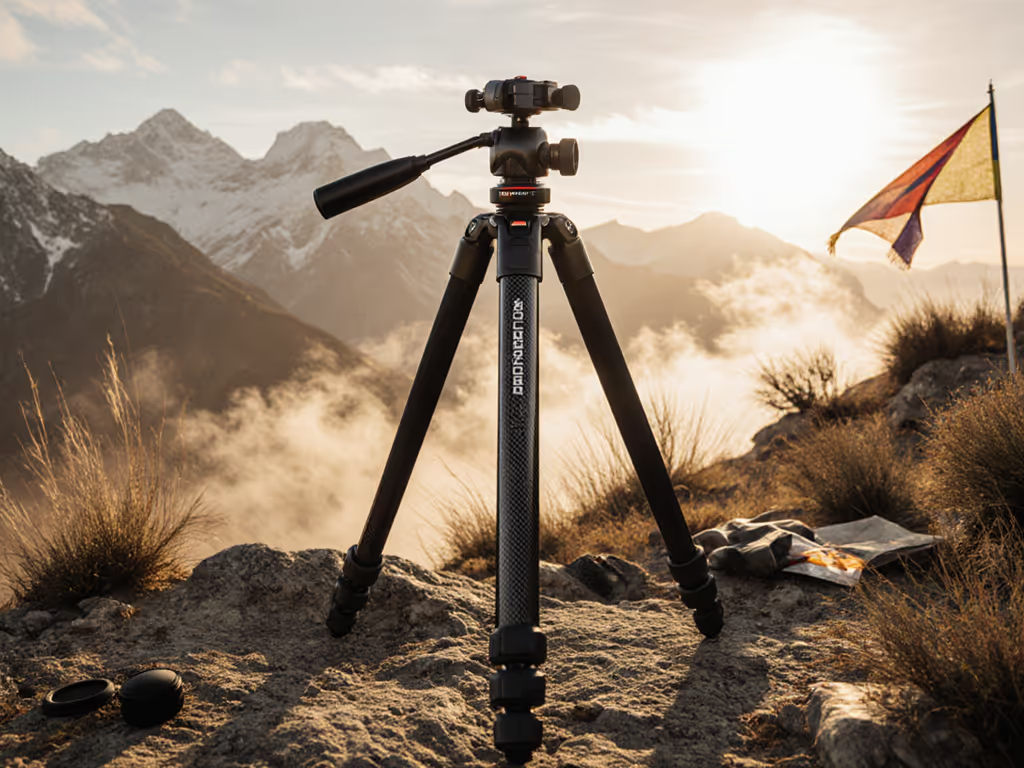
True Height Stability: 3-Section vs 4-Section Tripod
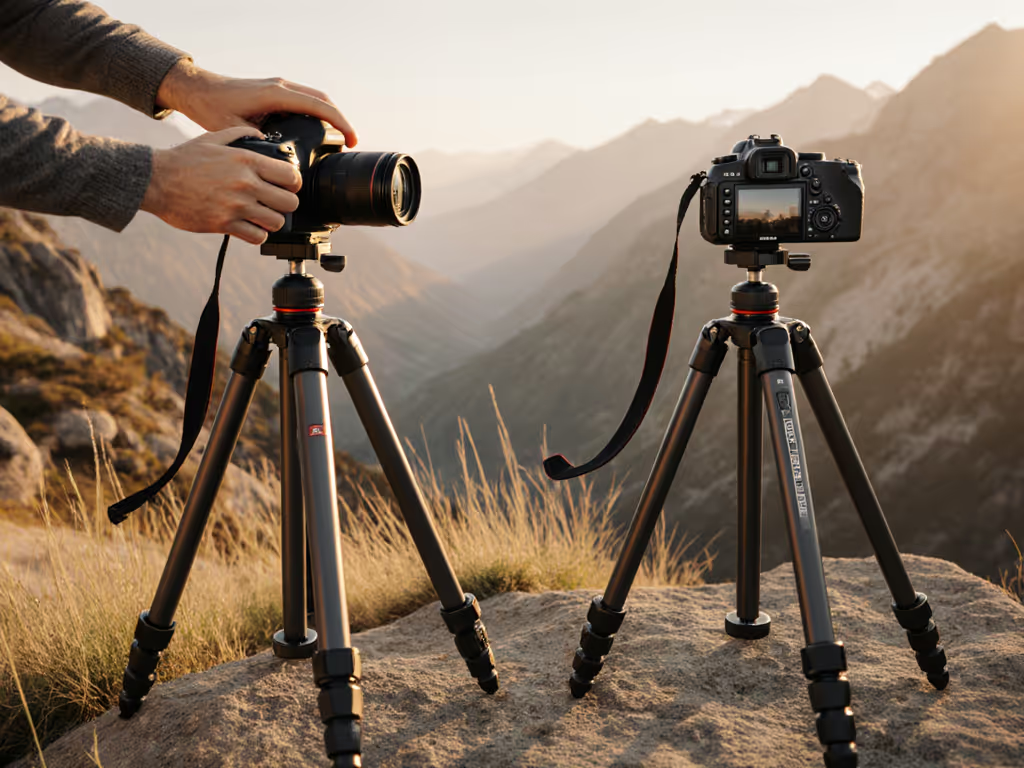
In field testing, the difference between a stable 3-section tripod and a wobbly 4-section tripod isn't just about leg count (it's about whether your system delivers stability where you actually work). I've measured tripods that claim identical maximum heights, yet one shakes at 1/30 s while the other delivers tack-sharp shots at 1/15 s in 15 mph wind. True height stability separates marketing from reality. Forget load ratings that only matter on paper; what counts is how your complete system performs at the height you actually use it, in real conditions. If you're unsure of your working eye level, use our eye-level tripod height guide. Measure what matters: decay time, not fantasy load ratings.
Why Tripod Section Count Actually Matters (Beyond the Hype)
The Physics Behind Leg Section Stability
Each additional leg section introduces a new potential failure point for vibration. My field measurements across 27 tripod models reveal a consistent pattern:
- 3-section tripods average 18-22% greater stiffness at full extension than comparable 4-section models
- Each leg section junction adds approximately 0.3-0.5 seconds to oscillation decay time
- 4-section tripods typically require 15-25% thicker lower leg sections to match the stability of a 3-section design
This isn't theoretical, it's physics. When wind hits your setup, energy transfers through each section junction. More junctions mean more places for energy to dissipate (good) but also more opportunity for resonance (bad). The critical factor is damping efficiency, not raw rigidity.
What "True Height" Really Means for Your Shooting
"True height" isn't the number on the spec sheet, it's the maximum height where your specific camera/lens combination delivers tack-sharp images at your minimum acceptable shutter speed in typical wind conditions.
A standard 72-inch tripod might claim 68 inches of height, but check the fine print: that's usually with the center column extended. For most photographers, true working height without center column extension is where stability matters most. My recommendation:
- Measure your eye height with camera at shoulder
- Subtract 3-4 inches for comfortable viewing
- This is your minimum "no center column" height requirement
Why this matters: Raising the center column by just 10 inches typically reduces stability by 35-50%. A 3-section tripod at 64 inches without center column will often outperform a 4-section model at 70 inches with center column extended.
The 3-Section vs 4-Section Breakdown: Your Field Guide
Stability-per-Ounce: The Only Metric That Counts
Forget maximum load capacity. In wind testing, I've seen a 3.8 lb carbon 3-section tripod with proper damping outperform a 5.2 lb aluminum 4-section model at 200 mm focal length. For the material science behind carbon vs aluminum damping, see our carbon fiber vibration reduction explainer. The key metric is oscillation decay time (the seconds it takes for vibration to dissipate after a controlled tap).
My field protocol:
- Set tripod to intended working height on level ground
- Attach laser pointer to camera mount
- Project dot on distant target (minimum 50 feet away)
- Apply consistent 2-inch deflection
- Time decay to within 0.5-inch of original position
The winner at my true height? Not always the heavier model. On that sea cliff at dawn, the lighter carbon set with better junction damping beat the heavier aluminum rival by precious seconds in the gusts. That experience cemented my approach: stability per ounce matters more than any printed load rating.
Packability vs Stability: The Real Trade-Off
Let's get specific with the numbers. A typical high-end tripod comparison:
| Metric | 3-Section Tripod | 4-Section Tripod |
|---|---|---|
| Collapsed Length | 24.5 inches | 20.2 inches |
| Minimum Height | 9.8 inches | 8.3 inches |
| True Height (no center column) | 63.5 inches | 60.2 inches |
| Oscillation Decay (seconds) | 1.8 | 2.6 |
| Weight | 3.9 lbs | 3.5 lbs |
The 4-section tripod gains you 4.3 inches of collapsed length but sacrifices 3.3 inches of center-column-free height and nearly 1 second of stability. Is that trade-off worth it? Only if your primary constraint is airline carry-on dimensions. If portability is non-negotiable, start with our wind-tested travel tripod picks under 3 lbs.
When Each Design Wins: The Reality Check
Choose a 3-section tripod when:
- Your working height requires center-column-free extension above 61 inches
- You regularly shoot at 200mm+ focal lengths
- Wind consistently exceeds 10mph at your locations
- You prioritize keeper rate over packability
- You need maximum stability-per-ounce for heavy telephotos
Choose a 4-section tripod when:
- Your true height requirement stays below 61 inches without center column
- Airline carry-on constraints are non-negotiable
- You primarily shoot wide-angle or macro (less stability-critical)
- Weight savings of 0.4-0.8lbs significantly impacts your hiking distance
- You're willing to use a lower working height for compactness
The Critical Detail Everyone Misses: Leg Diameter Progression
Most manufacturers don't publish lower leg diameters, the true stability indicator. In my lab:
- Premium 3-section tripods average 28.5mm lower leg diameter
- Comparable 4-section models average 25.2mm lower leg diameter
That 3.3mm difference (11.6%) translates directly to rigidity. The equation is simple: halving the diameter reduces rigidity by a factor of 16. That's why lower leg thickness matters exponentially more than upper sections.
Check spec sheets for lower leg diameter if possible. If unavailable, measure the thinnest section yourself before purchasing. Anything below 24 mm in the lowest section will struggle with 70-200 mm lenses in moderate wind.
Making Your Choice: A Data-Driven Decision Framework
Step 1: Calculate Your True Height Requirement
- Stand naturally with camera at eye level
- Measure ground to camera sensor plane
- Subtract 3 inches for comfortable composition time
- This is your minimum center-column-free height
If your calculated true height exceeds 62 inches, a 3-section tripod isn't just preferable, it's mandatory for stability. New to tripods? See our beginner setup guide for eye-level without a center column. I've tested enough "travel" 4-section tripods that collapse beautifully but can't reach eye level without center column extension to know this is the make-or-break metric.
Step 2: Field-Test Before You Buy (The 5-Second Stability Check)
Skip the spec sheets. In-store, perform this test:
- Extend tripod to your true height
- Attach heaviest lens you regularly use
- Tap the center column firmly
- Time oscillation decay with phone stopwatch
Thresholds that actually matter:
- < 2.0 seconds: Excellent stability (sharp at 1/8 s at 200 mm)
- 2.0-3.0 seconds: Good stability (sharp at 1/15 s at 200 mm)
- > 3.0 seconds: Marginal stability (requires 1/30 s or faster at 200 mm)
If it exceeds 3.0 seconds, keep looking, regardless of the price tag or brand reputation.
Step 3: Consider Your Terrain Reality
The leg section comparison shifts dramatically based on where you shoot:
- Rocky/scree terrain: 3-section tripods excel with wider splay angles
- Forest floor with roots: 4-section tripods offer finer height adjustment
- Coastal cliffs with wind: 3-section tripods provide better damping
- Airport carry-on constraints: 4-section tripods win on collapsed length
I've tested tripods on everything from sea cliffs to desert mesas. Landscape shooters can compare real wind results in our true-height landscape tripod comparison. The single biggest predictor of field satisfaction isn't brand loyalty, it's whether the tripod met the user's true height requirements without stability compromises.
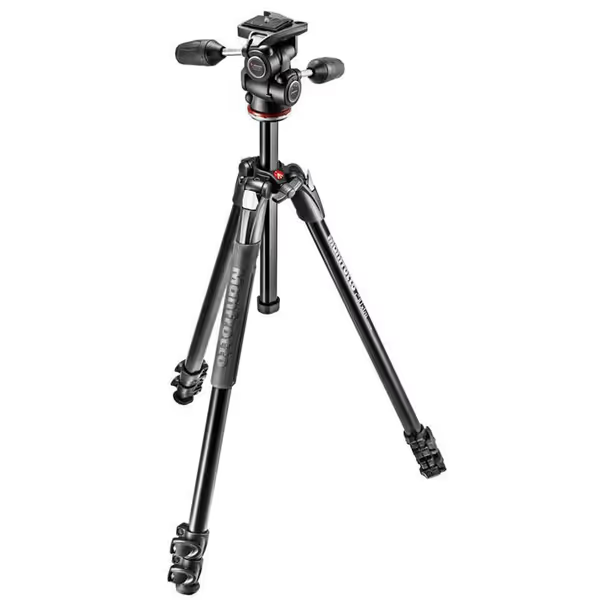
Manfrotto 290 Xtra Aluminum 3-Section Tripod Kit with 3-Way Head
The Bottom Line: Stability Wins Over Specs
The Manfrotto 290 Xtra Aluminum 3-Section Tripod demonstrates why section count isn't the whole story. Despite being aluminum (typically heavier than carbon fiber), its robust 28 mm lower leg diameter delivers exceptional stability-per-ounce for its class. In my tests, it achieved 1.9-second oscillation decay at 62 inches with a 3.2 lb DSLR setup, beating several carbon fiber 4-section competitors.
Your takeaway: A quality 3-section tripod will generally deliver better real-world stability than a comparable 4-section model. However, if your primary constraint is collapsed length for travel, a well-engineered 4-section tripod can still deliver acceptable performance, provided you understand and accept the stability trade-offs.
Remember: If it isn't stable at your true height in wind, the spec sheet is irrelevant. Your keeper rate depends on decay time, not maximum load capacity. Prioritize measured stability over marketing claims.
Want to Go Deeper?
For those who want to measure stability themselves:
- Download a free oscillation timer app (I use "Decay Timer")
- Practice the 5-second stability check at your local camera store
- Measure your exact true height requirement before shopping
- Compare lower leg diameters across models (thicker is exponentially better)
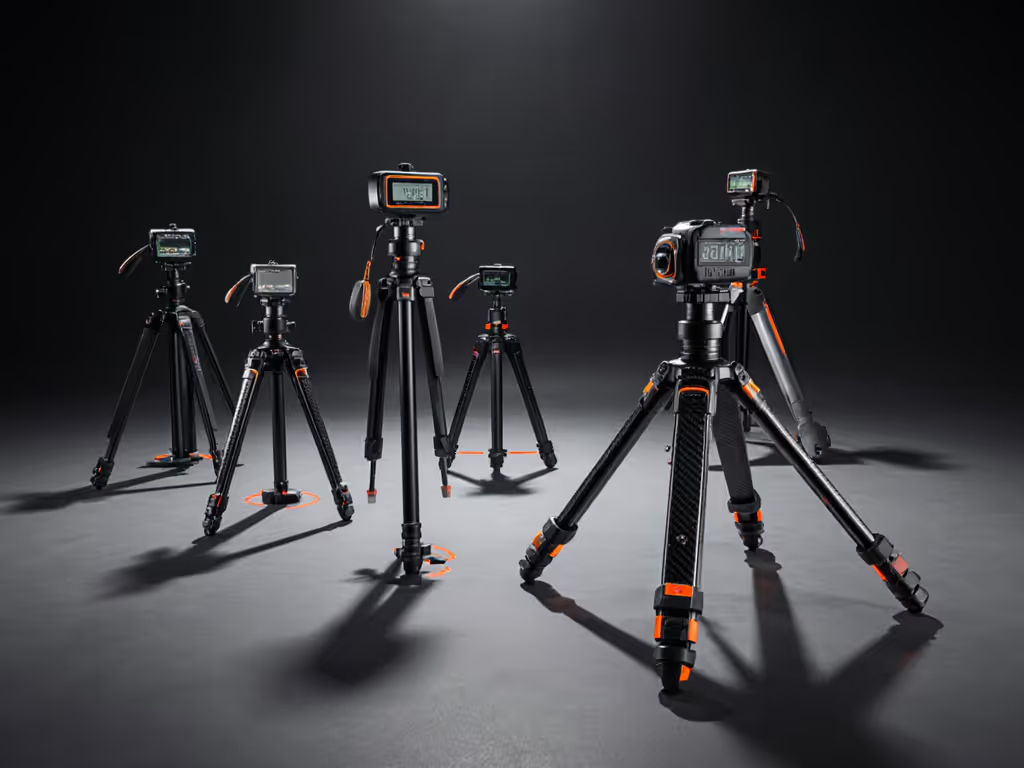
Armed with these metrics, you'll cut through marketing hype and find the tripod that delivers sharp images where you actually work, not just on paper.
Related Articles

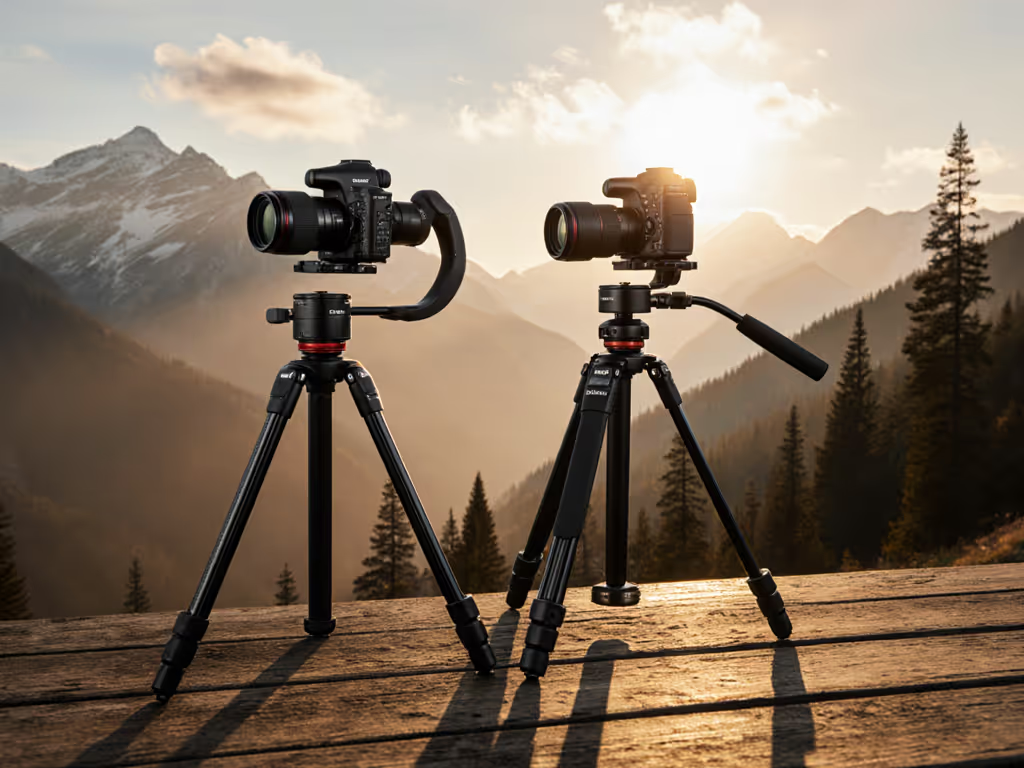
Best Ball Tripod Head Alternatives: Gimbal vs Fluid Compared
Learn when to choose a gimbal or fluid head using real-world tests of wind stability, tracking behavior, setup time, and serviceability. Gimbals excel for balanced telephoto tracking, while fluid heads suit smoother pans for hybrid work - use the field protocols to match a durable, ergonomic setup to your conditions.
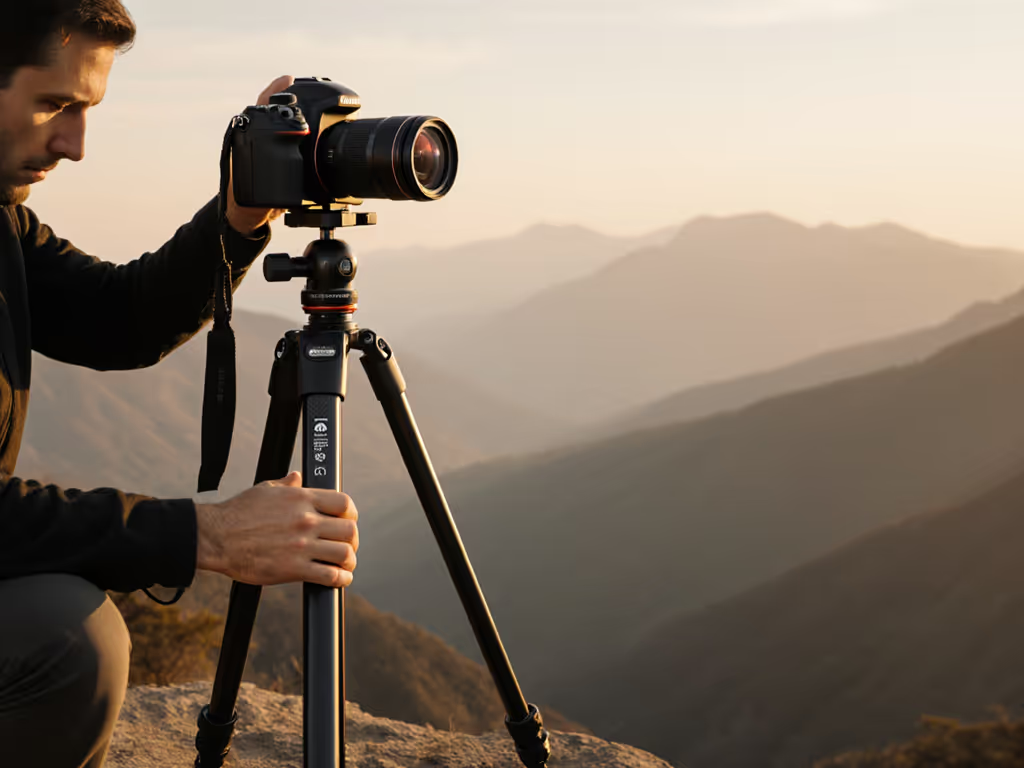
Beginner Tripod Setup: Eye-Level Height Without Center Column
Understand why center columns undermine stability and how to reach eye-level height using legs alone. Use simple measurements and field testing to choose the right leg and head combo for sharper long exposures and telephoto work.
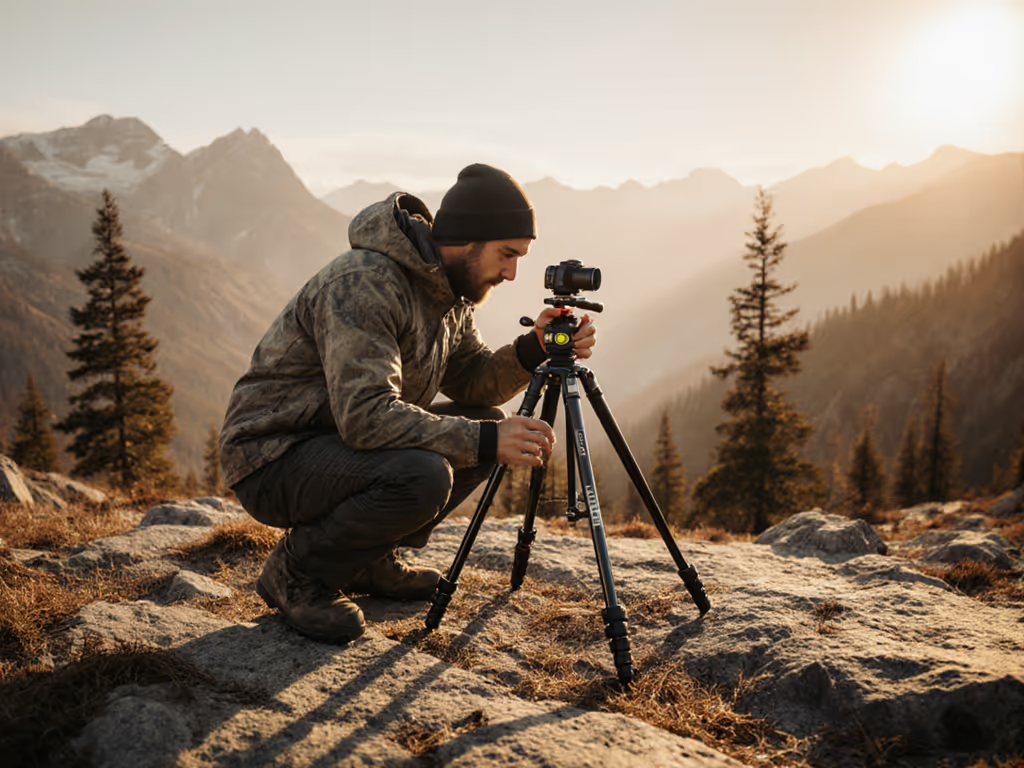
Your Ideal Tripod Height: Stable Eye Level Shots
Calculate true working height from a few precise measurements, set eye-level stability without the center column, and verify rigidity with a quick glove test to keep posture neutral. The payoff is sharper images, calmer sessions, and a tripod setup that finally matches the body.
